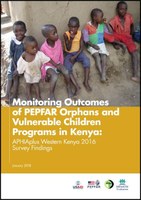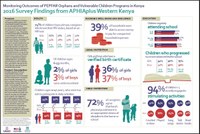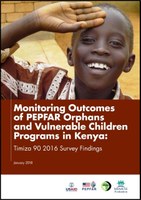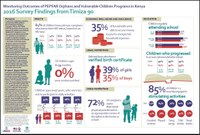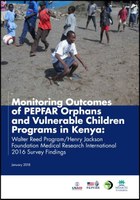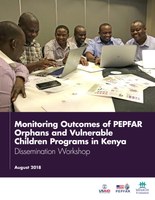Monitoring Outcomes of PEPFAR Orphans and Vulnerable Children Programs in Kenya
Globally, PEPFAR has invested considerable resources in orphans and vulnerable children (OVC) programs but has not studied systematically or on a large scale the effect of its programs on the well-being of beneficiary OVC and households. To fill this gap, in 2014, PEPFAR introduced a new global reporting requirement for monitoring the outcomes of its OVC programs, referred to as the monitoring, evaluation, and reporting (MER) OVC Essential Survey Indicators (ESIs).
In 2016, the PEPFAR Kenya OVC team selected three of its projects in western Kenya as the focus of ESI data collection:
- The USAID project APHIAplus, implemented by PATH
- The United States Centers for Disease Control and Prevention project Timiza 90 (formerly Pamoja Project), implemented by Elizabeth Glaser Pediatric AIDS Foundation (EGPAF Kenya)
- The United States Department of Defense HIV and AIDS project, implemented by the WRP/HJFMRI
The PEPFAR Kenya OVC team requested the assistance of the USAID- and PEPFAR-funded MEASURE Evaluation project to collect data to collect data for the MER ESIs. In late 2016, MEASURE Evaluation, in partnership with its subcontractor, APHRC, conducted three household surveys, one for each project, to collect the first round of data for the OVC ESIs.
The following materials present our findings.

